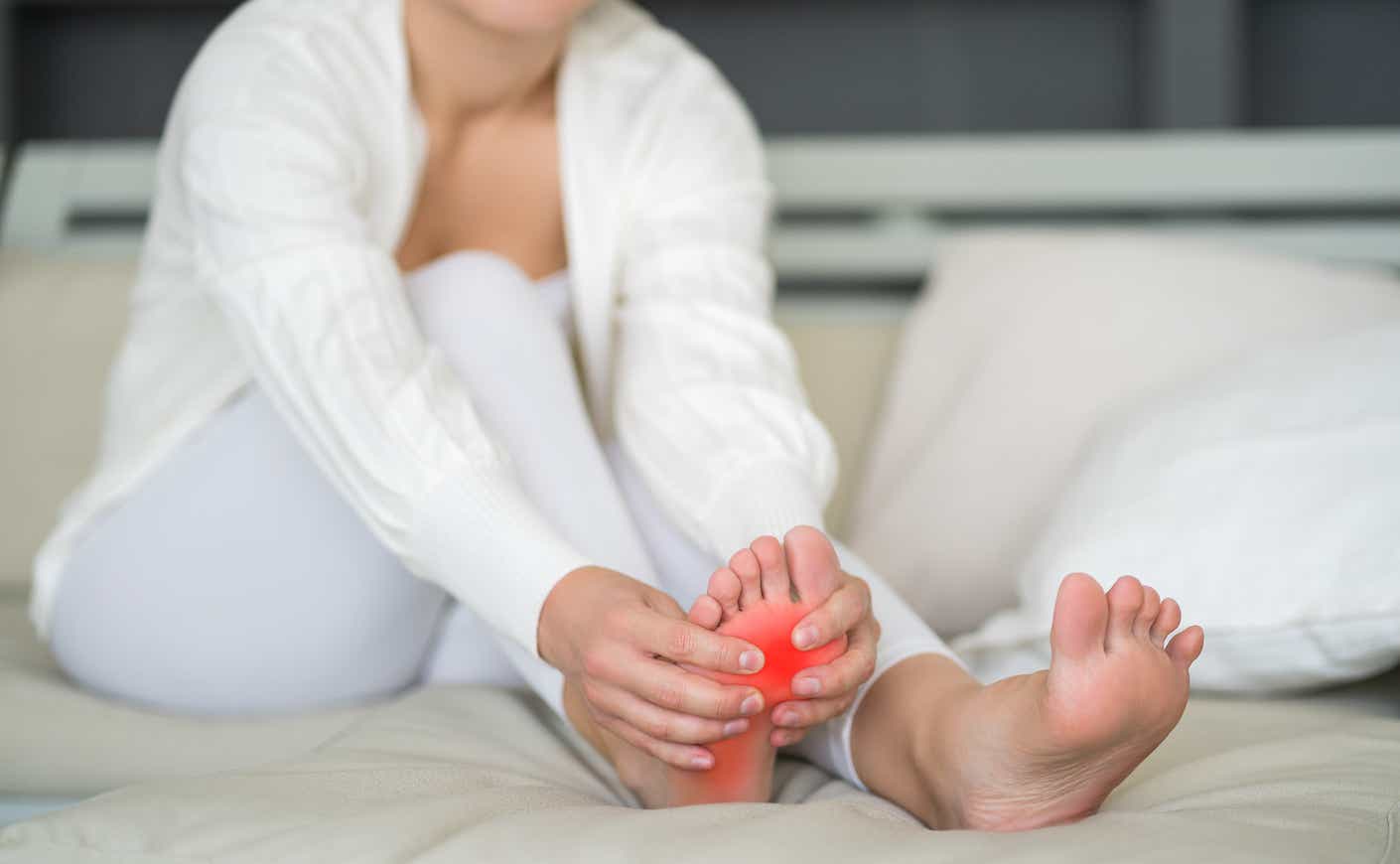Plantar fasciitis: You might not be able to spell it without help, but if you’ve ever felt a sharp or stabbing pain near your heel, you’re probably familiar with this condition. It’s an inflammation of, unsurprisingly, the plantar fascia, a thick band of fibrous tissue that runs across the bottom of each foot and connects the heel bone to the toes. The plantar fascia will swell up if it gets damaged or injured, leading to that oh-so-uncomfortable issue.
If plantar fasciitis has taken you from leaping to limping, you’re not alone: About 10 percent of the population suffers from the condition, and 2 million people in the U.S. are treated for it each year. Chronic, untreated foot pain will have anyone feeling defeeted, which is why we’re here to help you understand the symptoms, causes, and treatment options for plantar fasciitis. With that, let’s get into some plantar banter.
What causes plantar fasciitis?
When you walk, exercise, or dance, the plantar fascia stretches like a rubber band — it has to, in order to absorb shock and support your foot. But just like a rubber band, the plantar fascia loses some of its elasticity with overuse or excess stress, which leads to irritation and inflammation.
If you’ve got the condition, there are a number of culprits that may have caused it, including high-impact activity like running, weight gain, or even just genetics. But it’s usually caused simply by walking or standing on hard surfaces for a long time: That’s why it’s sometimes referred to as Policeman’s Heel, as it’s common among people whose professions require them to be on their feet for hours. One of the other easy ways to cause a plantar fasciitis flare-up is by walking barefoot on hard surfaces — when there’s nothing there to lessen the jolt of your foot hitting a hard surface, your plantar fascia are forced to absorb all of that impact.
What are the symptoms?
The telltale sign is one you’ll see first thing in the morning: Wincing with pain when you take your first few steps after getting out of bed. When they’re not in use, your ligaments tighten up and become stiff, so if your plantar fascia is already inflamed, the sudden stretching can cause intense pain. Generally, that stabbing sensation fades to a dull ache throughout the day, but may return after intense activity, when climbing stairs, or after sitting or resting for a while.
Surprisingly, many people with plantar fasciitis only feel it in one foot at a time. Even though our feet may look and feel like they’re working in tandem, in reality, most of us imperceptibly favor one side or the other. More stress on one foot means more inflammation in that foot.
How to heal plantar fasciitis quickly
The most common treatment option is one you’d use for lots of different muscle pain: Replace high-impact exercise with activities that are easier on your body, like biking or swimming. Otherwise, you should use a foot roller to massage the bottoms of your feet, and stretch them daily. Ice your fascia regularly, and try compression socks to reduce overall swelling.
How long will it take to get relief? While it’s possible for plantar fasciitis to clear up on its own with proper rest and care, the recuperation process can take several months, or even years. And in some cases, untreated plantar fasciitis can lead to pain in other areas like the hips, knees, or back, as the body attempts to compensate for the pain by distributing your weight to other areas of your body.
But if you want to heal your heels for the long haul, consider a solution perfect for any shoe, sneaker, or house shoe that puts your feet back in proper alignment to relieve the stress on your plantar fascia. A personally fitted arch support system from The Good Feet Store can help align your feet into their ideal position. Their system is clinically proven* to provide relief from plantar fasciitis and pain in the balls of your feet.
While plantar fasciitis might seem like a real heel, the good news is that those painful first steps in the morning don’t have to be a permanent part of your routine. So if you’re ready to get back up to speed, consider some gentle stretching, low-impact activity, and a good pair of personalized arch supports. Because life’s too short to let foot pain slow you down.
*“A test of efficacy and foot position alteration in patients wearing Good Feet arch supports for the treatment of pain”; Massachusetts General Hospital Institutional Review Board # 2022P000291. In an uncontrolled clinical study, at Day 90, most patients with plantar fasciitis reported an 85% decrease in pain. Patients with metatarsalgia showed a trend of a 40% reduction of pain at Day 90, although the data were not statistically significant.









